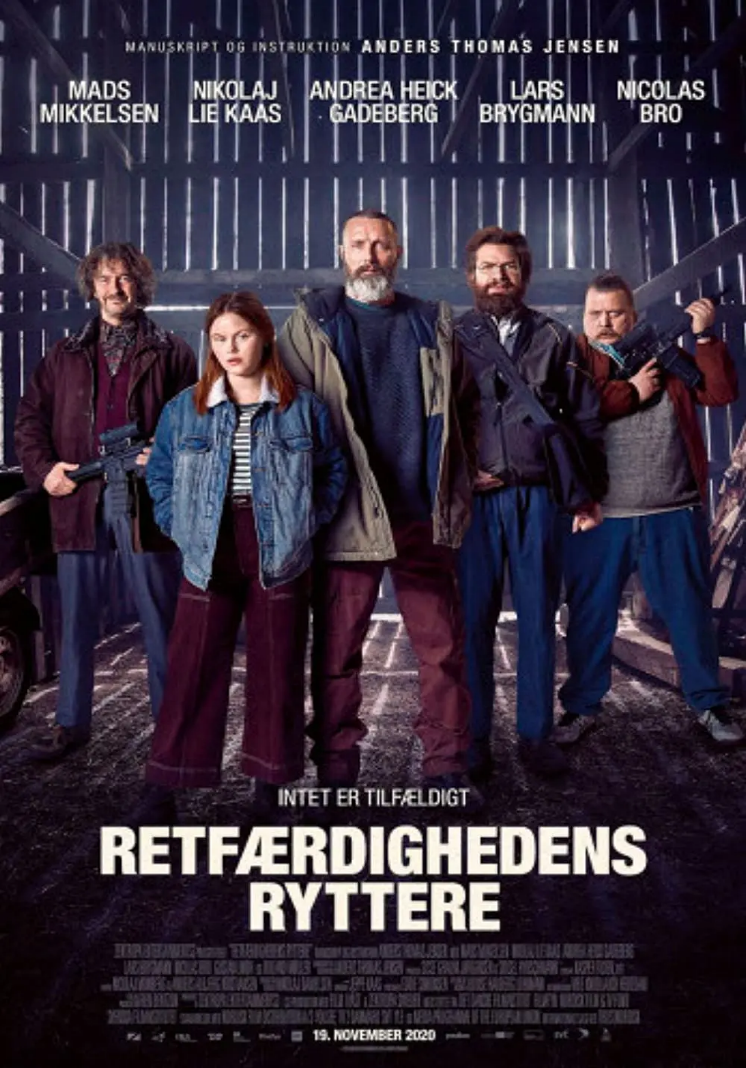Cold Case Hammarskjöld A ‘conspiracy theory’ film that connects the gaps in history

On September 18, 1961, Dag Hammarskjöld, then Secretary-General of the United Nations, was killed in a bizarre plane crash that many believe was the result of his political stance of staunchly supporting the independence of the emerging African nations despite European influence at the time. Although not many people may know Hammarskjöld’s name now, at the time, he was a very important political figure who held views and positions that could even be said to directly influence the world political landscape at the time, so it is not surprising that such conspiracy theories have been voiced after his death.
But the case of his plane crash has been inconclusive for more than half a century, with an independent UN investigation giving the conclusion of pilot error or a premeditated crash, both of which are possible. This “nothing to say” conclusion, it is impossible not to feel that the truth behind this, is “unspeakable”.
The Hammarskjöld Case” is an attempt to uncover the “unspeakable” truth of this unsolved case of the century. But it is very different from the kind of documentary we usually watch, which focuses on the mystery of the case.
The film’s director and screenwriter, Max Brugger, who also stars in the documentary, spent six years traveling throughout Europe and Africa with his Swedish private detective partner, Joran Bjorkdal, trying to find out the truth about Hammarskjöld’s death, only to discover that the mystery behind it was far more complex and dark than they thought.
The film consists of several parts: Max Brugger’s investigation, real historical images, fictional animated narrative scenes, and Max Brugger discussing and recording the investigation with two black female secretaries in the hotel where he lives, which, under Max Brugger’s organization, surprisingly form a film noir-like Hitchcockian sense of suspense.
This may have something to do with the fact that Max Brugger lays out several conspiratorial hypotheses of the unsolved case at the beginning, such as the possibility that small fighter jets shot down the plane Hammarskjöld was in, such as the playing card ace of spades found in the collar of Hammarskjöld’s remains, which in the accepted notion of the time pointed to the CIA, and such as the bomb theory, and what the bomb theory implicates, a mysterious agency that most likely designed The South African Institute of Marine Research, or SAIMR for short, was the mysterious institution that was involved in the conspiracy.
This organization may have not only engineered Hammarskjöld’s death, but may have even done a lot of hidden things in order to achieve apartheid and the extermination of black people. The leading figure of this organization, Commodore Maxwell, was described by pro-lifers as a deranged figure who wore only white and who was apparently closely involved in many of the operations, including the assassination of Hammarskjöld, but this man seems to have been invisible in history, leaving only a photograph behind.
These possibilities laid out at the beginning of “The Hammarskjöld Mysteries” are like the dangers and bombs planted at the beginning of a Hitchcock film.
These possibilities are the protagonists, the director of “Hammarskjöld Suspense” and his investigators to continue to pursue the “McGuffin”, but also to mobilize our curiosity as an audience. And in the end, we know that the McGuffin never existed, just like most conspiracy theories that cannot be proven in the end.
And with the pursuit of these “McGuffin”, we also followed the director step by step to a more hidden and crazy world, such as Maxwell will open a free clinic, in the name of treatment to do experiments on black people. For example, the “South African Marine Institute” will recruit a large number of mercenaries for their covert training in case of emergency. As the investigation goes further and further, the mystery behind this, in fact, has nothing to do with the Hammarskjöld unsolved case.
The director himself admits this in the film, that Hammarskjöld’s death was just a ticket to do what he really loved, to enter that crazy world of tracking down mercenaries and telling the evil stories of men in white.
The whole documentary is basically composed in the way of investigative science, and the director himself who investigates the events becomes the most important part of his documentary, which makes the film present as a ‘meta-documentary’.
For example, at the beginning of the film, the director himself is dressed in all white, with his back to the camera, saying, “One thing I’m pretty sure of is that the person behind this story, only wears white.
Of course, Max Brugger, as the director, is the originator of the whole film and the “mastermind” of the text “Hammarskjöld Mysteries”. He has no qualms about presenting his own confusion, bewilderment and disbelief on camera, saying that his work as a journalist is a ‘failure’ at a time when the vast majority of investigations lead to a dead end.
In a way, the ambiguity and uncertainty of these investigations in “Hammarskjöld’s Case” is also a counter-evidence of the nesting of truth and lies in the slit of history it seeks to explore. It is for this reason that he hired two black secretaries to discuss the case with himself while documenting the investigation. After all, this is a case in which the fate of Africa and black people are closely linked.
What these two black female secretaries provided was a subtle presence, the attitude they presented when they heard the interviews about the black experiment, about the plan to exterminate the black people with HIV, which provided a subtle perspective and attitude to the investigation, the recording, the textual analysis. There is both an empathy to see the historical experiences suffered by the group one is in, and an attitude of looking at the past after stepping out of history.
However, The Hammarskjöld Case is more of a “conspiracy theory” film than an investigation into the truth of Hammarskjöld’s death.
Many unsolved unsolved cases in history will eventually lead to conspiracy theory explanations, such as the still unsolved JFK assassination case, which happens to be mentioned in the film. When the director called to interview the people involved, the other party said somewhat sarcastically, “Whatever you are looking for, you better find the person who killed President Kennedy and do something right!
For example, the death of Marilyn Monroe, although the official conclusion is suicide, but there has been the view that this is because she maintained too close a relationship with the Kennedy brothers, heard too many political secrets and led to the assassination.
Another example is that the Apollo moon landing has always been considered a hoax by conspiracy theorists, and there are even attempts to find evidence of his insinuation of the moon landing hoax in Kubrick’s “The Shining,” the haunted room 237 with the room number number that is approximately equal to the distance from the earth to the moon, which many people believe is saying that the moon landing was a sham.
In this sense, we can call “The Hammarskjöld Mysteries” a “conspiracy theory movie”.
The film tries to find an explanation for Hammarskjöld’s death, not so much as a search for the truth, but rather as an attempt to find a smooth, connected truth to the seams of history for this unsolved case. But in fact, history is complex and ambiguous, uneven and full of cracks, and there are many dimensions that determine history, and it is impossible to find a perfect, unique and smooth explanation for it.
The director actually sets out this ‘conspiracy theory research’ attitude of his own at the very beginning. The first transcript he wrote for this investigation was: “This is either the world’s biggest murder mystery or the world’s dumbest conspiracy theory.
Conspiracy theories have become a complex culture in today’s world, and they even participate to some extent in the process of world and history construction. The ambiguous past of history, the untold truths, and the secret agencies that lurk around the world not only fulfill the mysterious imagination of today’s world, but also become the material of the most popular movies today. Spy”, “James Bond” and other spy movies are the most popular products of conspiracy culture.
They provide an explanation for the history that is beyond the reach of the general public, and they also satisfy one of the most secret mindsets of people, a mindset that is sometimes difficult even for us to realize.
That is, subconsciously, we want the world to be orderly, we want history to be traceable, we want all events to have rules, no matter whether the rules are good or evil, because in such order and rules, we can find a suitable place for ourselves, and we can feel a slight sense of security in this world full of unknowns and dangers because of “rules”.
We who are looking for answers for history are also looking for answers for our own position.




